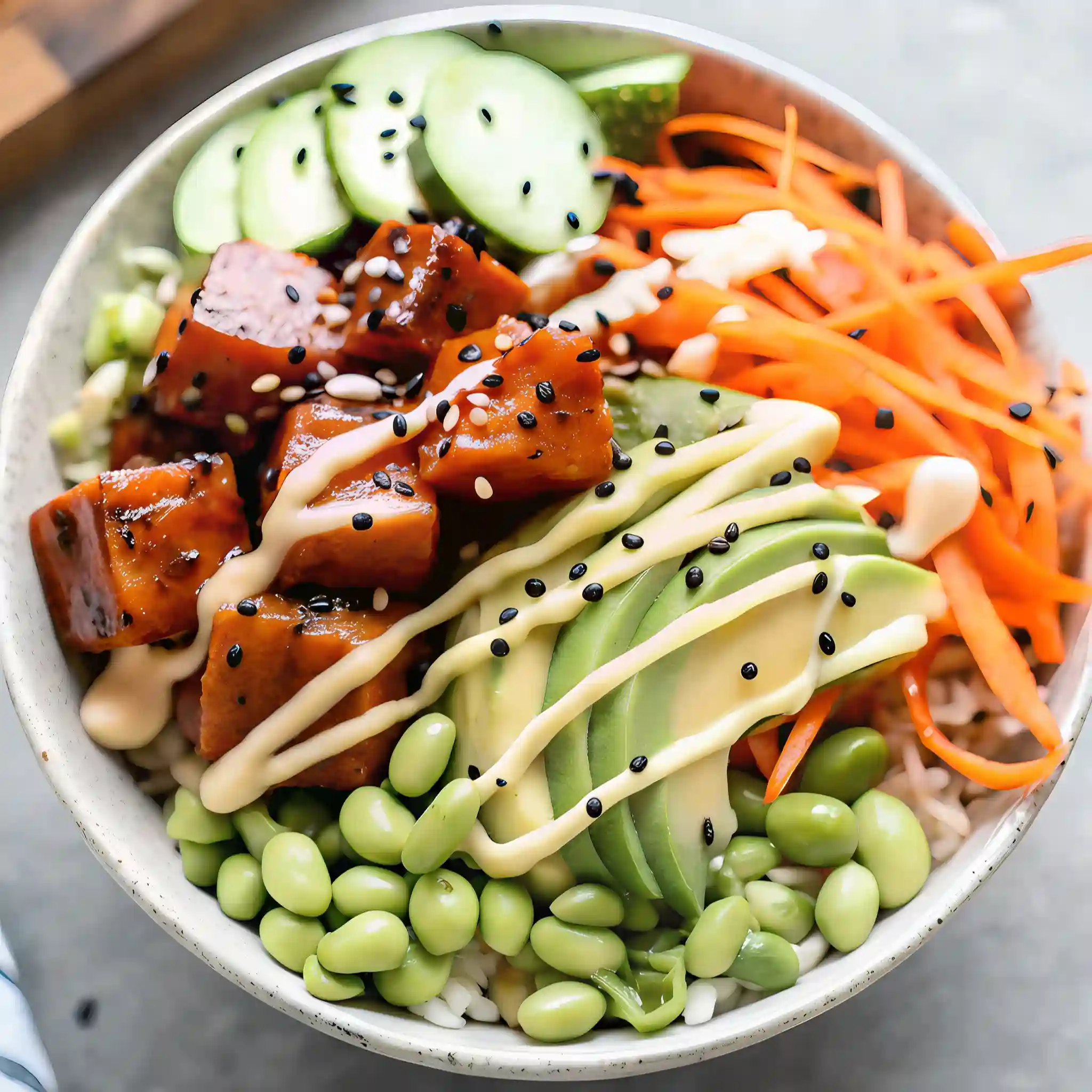Why pay twenty bucks for a poke bowl when you can build a better one at home? With the right ingredients and a few simple techniques, you can create a bowl that’s fresher, tastier, and completely customized to your taste.
In this guide, you’ll learn everything you need to know. From picking sushi-grade fish and cooking perfect rice to mixing bold sauces and layering toppings like a pro, this is your go-to resource for mastering homemade poke bowls.
Table of Contents
What is a Poke Bowl?
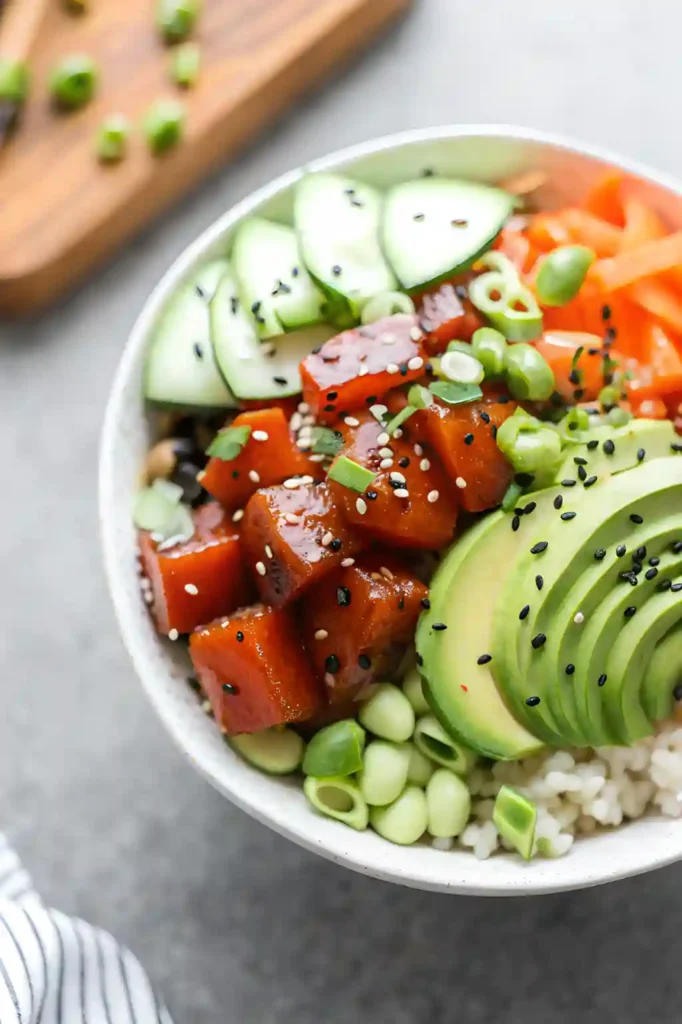
A poke bowl is a Hawaiian dish built around cubed raw fish, usually seasoned with soy sauce, sesame oil, and green onions. The word “poke” means “to slice” in Hawaiian, which refers to the way the fish is cut.
Traditional Hawaiian poke is simple and straightforward. It often features ahi tuna seasoned with shoyu and served on its own or over plain rice. In contrast, the Mainland version has evolved into something much more colorful and customizable. These modern bowls often include spicy mayo, avocado, crispy onions, mango, and a wide range of sauces and toppings.
Both styles are delicious, but they offer different experiences. Hawaiian poke is all about letting the fish shine, while the modern approach leans into bold flavors and variety.
Are Poke Bowls Healthy?
Yes, poke bowls can be very healthy, especially when made at home with fresh ingredients and balanced portions.
At their core, poke bowls offer lean protein from raw fish like ahi tuna or salmon. Add in avocado for healthy fats, along with fiber-rich toppings like edamame, cucumber, and brown rice, and you’ve got a well-rounded meal.
To keep things on the healthier side, watch out for high-calorie extras. Spicy mayo and other creamy sauces can add up quickly, and large scoops of white rice may tip the carb scale. Choosing brown rice or a smaller portion helps balance things out.
When built thoughtfully, poke bowls are a clean, nutrient-packed option that feels indulgent without the guilt.
Ingredients Needed
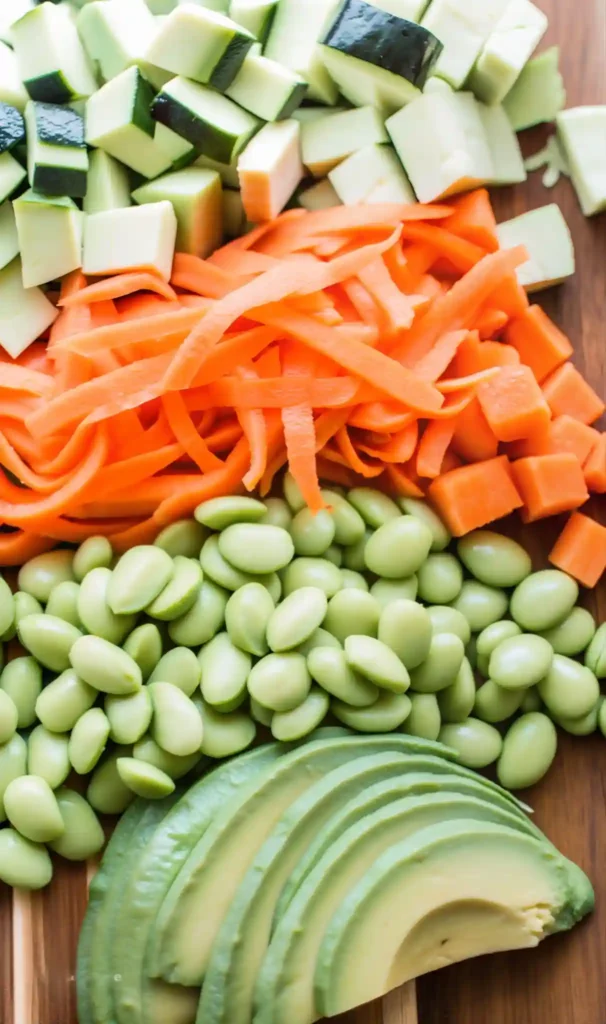
For the Base
Brown Rice – A hearty option that adds fiber and keeps you full longer. If you’re short on time, pre-cooked rice from a rice cooker or local Asian restaurant works well.
Sushi Rice – For a more traditional feel, use seasoned sushi rice. It’s soft, slightly sticky, and absorbs flavors beautifully.
Optional Alternatives – Coconut rice for a hint of sweetness or quinoa for a lighter grain base.
For the Protein
Ahi Tuna – Look for sushi-grade tuna. It should be deep red and smell clean. Ask your fish monger if you’re unsure. Whole Foods usually carries high-quality cuts.
Optional Swaps – Sushi-grade salmon or firm tofu for vegetarian versions.
For the Marinade
Tamari or Soy Sauce – Adds umami depth. Tamari is a gluten-free option.
Sesame Oil – Just a little brings rich, nutty flavor.
Rice Vinegar – Provides acidity to balance the richness of the fish.
Honey – Adds a subtle touch of sweetness.
Optional Kick – A squirt of sriracha gives the tuna a spicy edge.
For the Sauce
Mayonnaise – Light or full-fat both work. It creates a creamy base for spicy mayo.
Sriracha – Combine with mayo to make the signature spicy drizzle. Adjust the heat to your taste.
Salt and Pepper – To taste, especially for the spicy mayo mix.
For the Toppings
Avocado – Creamy and rich. Slice just before serving to avoid browning.
Edamame – Steamed and shelled. Great for added protein and texture.
Cucumber – Crisp and refreshing. Dice or slice thinly.
Shredded Carrots – Add crunch and color.
Green Onion – Chopped for garnish. Brings a pop of freshness.
Black Sesame Seeds – Adds visual contrast and a light crunch. Optional but recommended.
How to Make a Poke Bowl
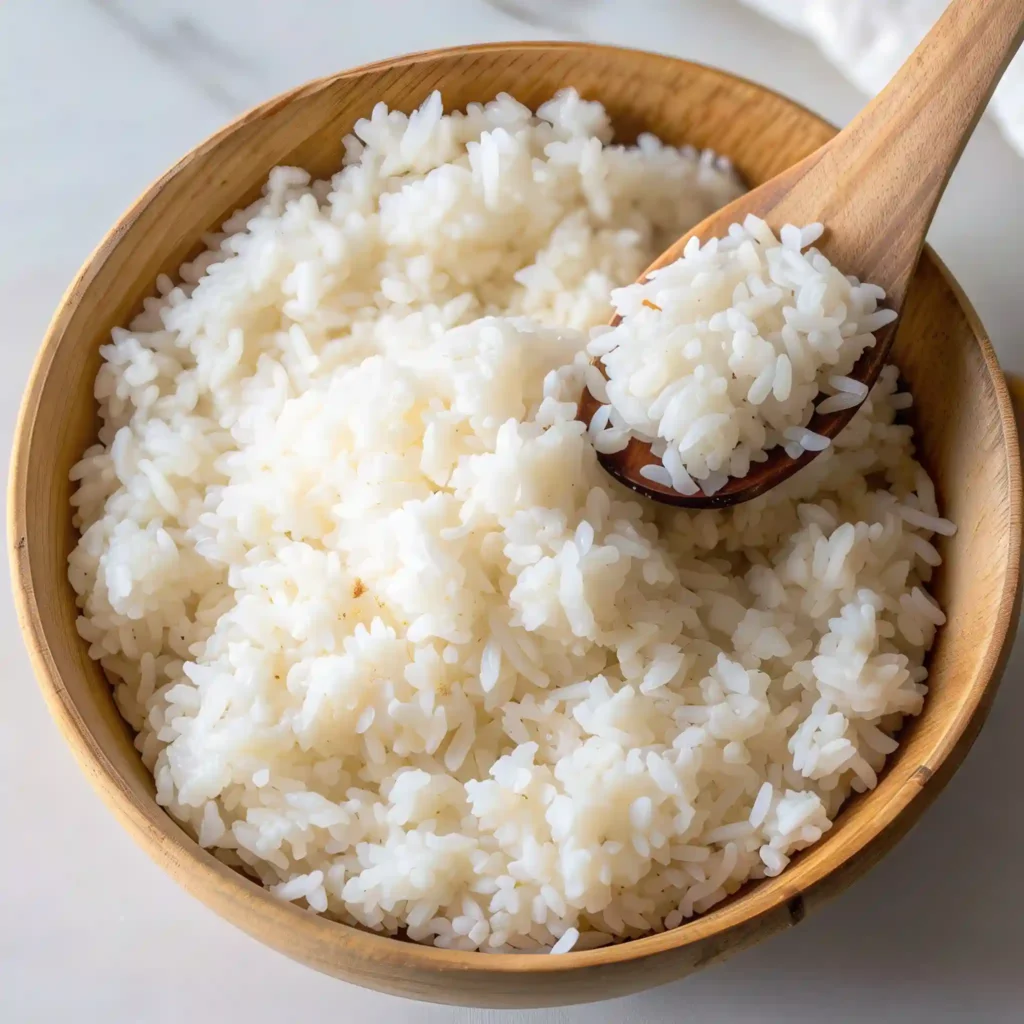
1. Cook the Rice
Start by cooking your rice. Brown rice takes longer, usually about forty minutes in a rice cooker. If you’re using sushi rice, rinse it well before cooking to remove excess starch. You can make the rice ahead of time and chill it for easier bowl assembly later.
2. Prepare the Tuna
Use a sharp knife to cut the ahi tuna into small, bite-sized cubes. Place the cubes in a mixing bowl. Add tamari or soy sauce, sesame oil, honey, and rice vinegar. If you like heat, mix in a small amount of sriracha. Stir gently to coat the tuna evenly. Let it marinate while you prep the rest of the ingredients.
3. Make the Spicy Mayo
In a small bowl, combine mayonnaise with sriracha. Mix until smooth. Taste and adjust the spice level to your liking. Transfer the spicy mayo to a small ziplock bag, press it to one corner, and snip a tiny piece off the corner for easy drizzling later.
4. Prep the Toppings
Slice the cucumber and avocado. Steam the edamame if it isn’t already cooked. Shred the carrots and chop the green onions. Keep everything separate and ready for quick assembly.
5. Assemble the Bowls
Spoon the cooked rice into each bowl. Add a generous scoop of marinated tuna on top. Arrange your toppings around the tuna. Fan out the avocado for a polished look. Sprinkle with sesame seeds and chopped green onion. Drizzle with spicy mayo just before serving.
Every step adds texture, flavor, and color to your bowl. Take your time and make it your own.
Serving and Storage Tips
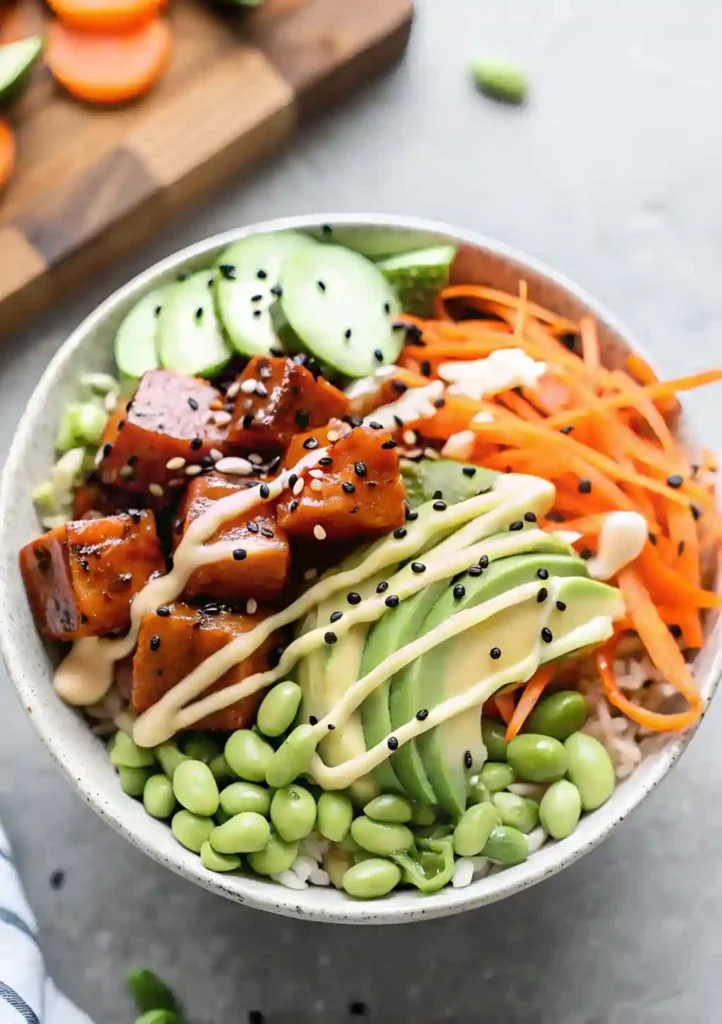
How to Serve
Serve your poke bowls immediately after assembling. This keeps the fish fresh and the toppings crisp. Use wide, shallow bowls for better presentation and easy layering. If you want to impress, slice the avocado just before serving and fan it out on top for a clean, professional finish.
Offer toppings buffet-style if you’re serving a group. Let everyone build their own bowl based on their taste. This also works great for picky eaters or guests with dietary restrictions.
How to Store
If you have leftovers, store the marinated fish and rice in separate airtight containers in the fridge. Use the tuna within twenty-four hours for best quality. Toppings like edamame and carrots can last up to three days.
Do not freeze raw fish once it’s been thawed. For best results, prep only what you plan to eat. Leftover spicy mayo can be stored in the fridge for up to five days in a sealed container. Give it a quick stir before using again.
Recipe Variations and Pro Tips
Spicy Tuna Poke
Skip the marinade for the fish. Instead, mix the diced tuna directly with spicy mayo, a touch of sriracha, soy sauce, and sesame oil. This version is creamy, bold, and full of flavor.
Salmon Poke
Swap out the tuna for sushi-grade salmon. Use the same marinade and toppings. Salmon brings a slightly richer texture and pairs well with both sweet and spicy sauces.
Vegetarian Poke
Use firm tofu cut into cubes. Let it sit in the marinade for at least thirty minutes so it absorbs the flavors. Tofu works well with all the usual toppings and sauces.
Time-Saving Tip
Use pre-cooked rice from a rice cooker or pick up a container from your local Asian restaurant. It saves time without sacrificing taste.
Pro Tips
Chill your bowl before assembling. This keeps the fish cool and fresh.
Use a sharp knife for clean, even tuna cubes.
Taste your marinade before adding the fish. Adjust soy, vinegar, or honey for balance.
Drizzle sauces last so your toppings stay vibrant and crisp.
Build your bowl with contrast in mind. Mix crunchy, creamy, fresh, and savory elements for the perfect bite.
Conclusion
This poke bowl recipe brings restaurant-quality flavor straight to your kitchen. With fresh fish, bold sauces, and customizable toppings, you get a meal that’s healthy, satisfying, and easy to love.
You now know how to choose the best fish, make flavorful rice, mix standout sauces, and build a bowl that looks as good as it tastes. Whether you’re craving classic Hawaiian simplicity or the punch of spicy mayo, this guide gives you everything you need.
If you tried this recipe, leave a comment and a star rating. Your feedback helps others and keeps the recipe improving.
Share your bowl on Pinterest or Facebook and tag us so we can see your creation.
What toppings did you try? Did you go classic or add your own twist? Let us know in the comments below.
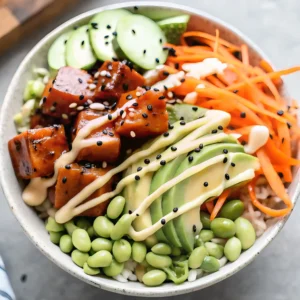
Poke Bowl Recipe
Ingredients
For the Base
- 1 cup brown rice or sushi rice
For the Protein
- 200 g ahi tuna sushi-grade, cubed
For the Marinade
- 2 tbsp tamari or soy sauce
- 1 tsp sesame oil
- 1 tbsp rice vinegar
- 1 tsp honey
- 1 tsp sriracha optional for heat
For the Sauce
- 3 tbsp mayonnaise
- 1 tbsp sriracha
- to taste salt and pepper
For the Toppings
- 1 avocado sliced
- ½ cup edamame steamed and shelled
- ½ cup cucumber sliced or diced
- ¼ cup shredded carrots
- 2 green onions chopped
- 1 tsp black sesame seeds optional garnish
Instructions
- Cook the Rice: Prepare brown or sushi rice according to package instructions. Chill if making ahead for easier assembly.
- Prepare the Tuna: Cube the tuna and place in a bowl. Add tamari, sesame oil, rice vinegar, honey, and optional sriracha. Toss gently to coat and marinate while prepping toppings.
- Make the Spicy Mayo: In a small bowl, mix mayo and sriracha. Taste and adjust spice. Transfer to a ziplock bag for easy drizzling.
- Prep the Toppings: Slice cucumber and avocado, shred carrots, chop green onion, and steam edamame if needed. Keep toppings separate for assembly.
- Assemble the Bowls: Add rice to each bowl, top with marinated tuna, arrange toppings around the bowl, drizzle spicy mayo, and sprinkle sesame seeds and green onions.
Notes
Nutrition Facts (Per Serving)
- Calories: 490 kcal
- Carbohydrates: 60 g
- Protein: 10 g
- Fat: 25 g
- Saturated Fat: 4 g
- Cholesterol: 2 mg
- Sodium: 649 mg
- Potassium: 754 mg
- Fiber: 12 g
- Sugar: 3 g
- Vitamin A: 147 IU
- Vitamin C: 12 mg
- Calcium: 63 mg
FAQs
Is poke Japanese or Hawaiian?
Poke is originally Hawaiian. The dish has roots in native Hawaiian cuisine, where locals would season raw fish with sea salt, seaweed, and crushed kukui nuts. While Japanese flavors like soy sauce and sesame oil influenced modern versions, the dish itself started in Hawaii.
What are the ingredients in a poke bowl?
A typical poke bowl includes cubed raw fish, rice, a flavorful marinade or sauce, and various toppings. Common ingredients are ahi tuna, soy sauce, sesame oil, rice vinegar, avocado, cucumber, edamame, shredded carrots, and spicy mayo.
What fish is best for poke?
Ahi tuna is the classic choice, but other sushi-grade fish like salmon or yellowtail also work well. Always choose fish labeled as sushi-grade or sashimi-grade and buy from a trusted source.
How long to marinate poke?
Ten to fifteen minutes is usually enough for flavor to develop without over-softening the fish. If using tofu, marinate it for at least thirty minutes to allow it to absorb more flavor.
Do you eat poke hot or cold?
Poke is typically served cold or at room temperature. The rice can be warm or cooled, but the fish should always be chilled to maintain freshness and texture.
Is a poke bowl basically sushi?
Not exactly. While both use raw fish and similar ingredients, sushi is typically rolled or shaped with vinegared rice, while poke bowls are layered in a bowl. Poke is also more customizable and often includes a wider range of toppings and sauces.

